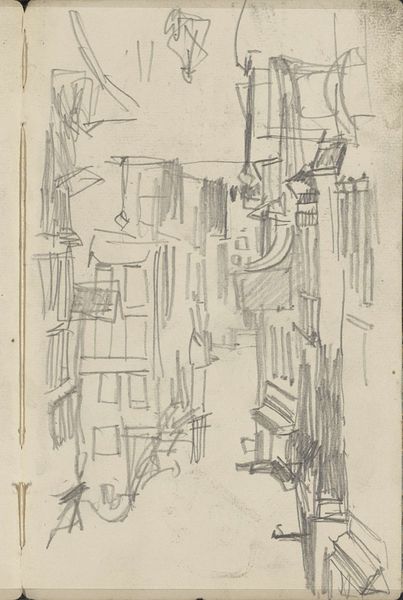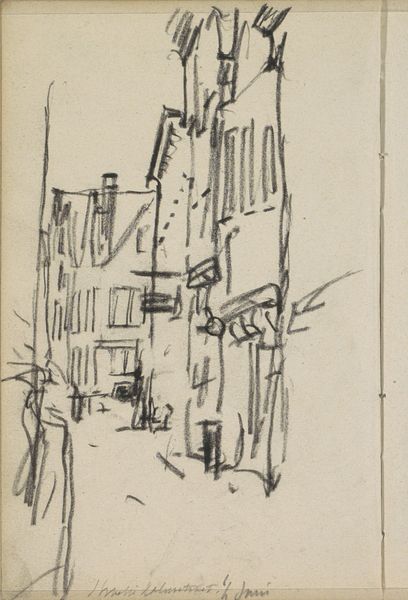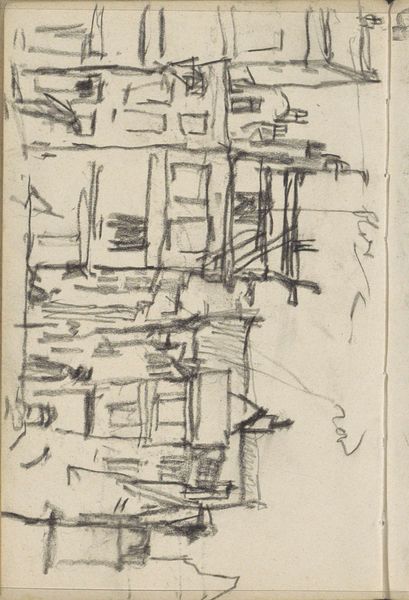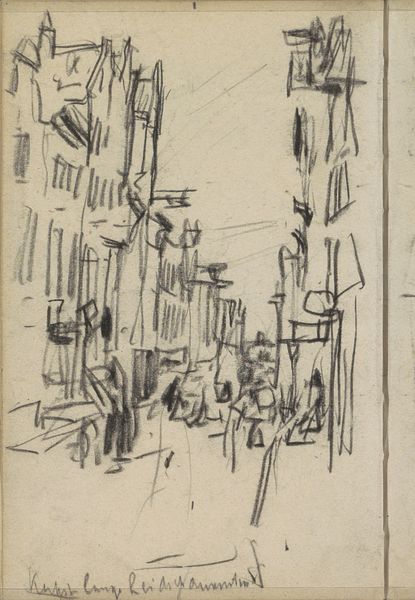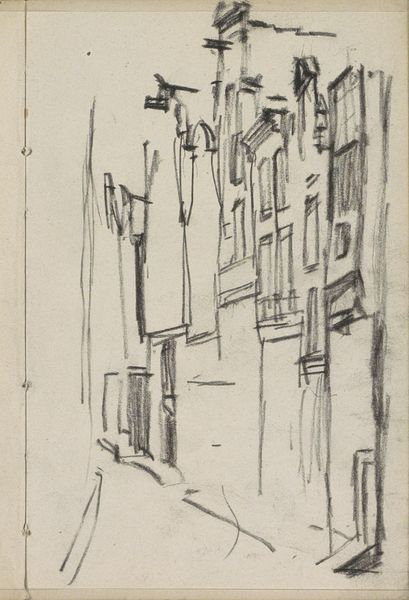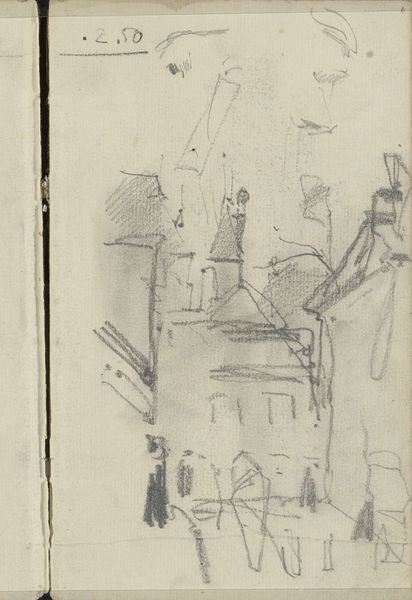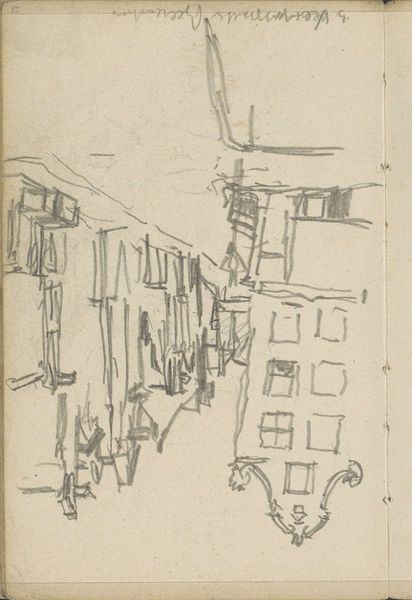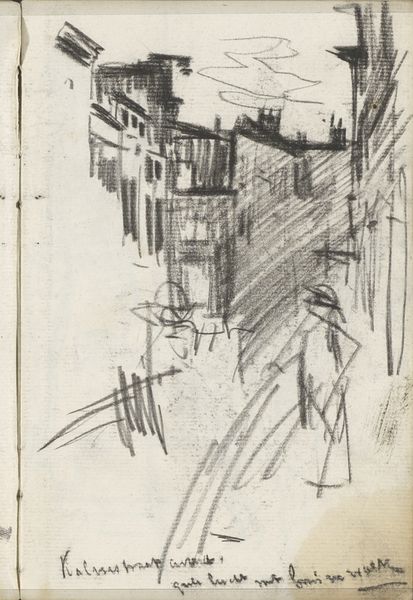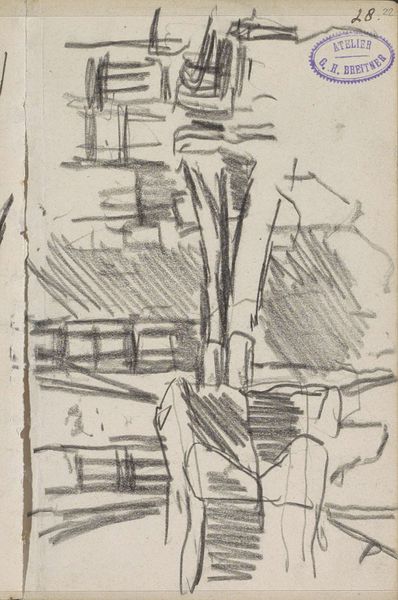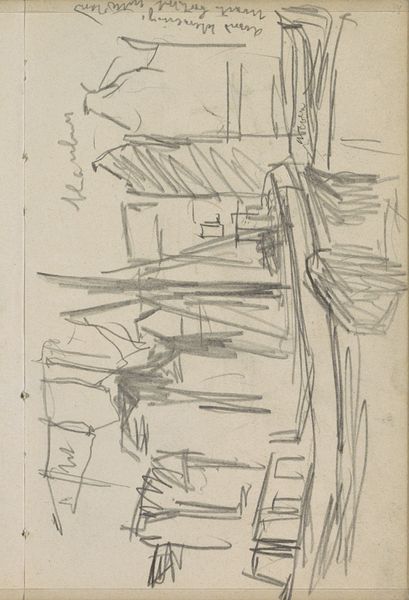
Dimensions: height 125 mm, width 78 mm
Copyright: Rijks Museum: Open Domain
Curator: This is George Hendrik Breitner’s “View of the Kalverstraat in Amsterdam,” a pencil drawing completed in 1897. Editor: It has such a fleeting, ephemeral quality to it. Like a memory half-formed. You can almost feel the hustle of the street, but it’s also very sparse. Curator: Absolutely. Breitner was fascinated by capturing the energy of the modern city, particularly the everyday lives of its working-class inhabitants. And it is the “Kalverstraat,” so one can ask themselves about the role of consumption, labor and class, can’t they? Editor: Given its location now in the Rijksmuseum, what sort of social practices would this space have been supporting in the 19th century versus how those social practices function today? Were there inequities within Amsterdam and its design, which privileged certain groups over others? Curator: These sketches were quickly rendered observations, using a direct and unidealized vision, a sharp contrast with the idealized history paintings popular at the time. Consider the influence of photography; his approach challenged traditional academic art that reinforced societal hierarchies and instead showed modern society from a grittier and perhaps real view. Editor: Looking at the paper itself – what kind is it? The texture feels critical here. And, knowing this was done in pencil, it does make you wonder about Breitner’s choice to focus on drawing when painting might seem more conventional for “high art,” at least at that time. Curator: Exactly, the choice of materials reinforces that immediacy and underscores the sketch's documentary quality but also what it signified to move between the realm of sketch and the hierarchy of the “completed” painting or drawing. And it’s dated, ‘6 October,’ giving it the sensibility of lived reality, yet now on display in a modern, elite institution. Editor: Interesting indeed. The very placement reframes our understanding of artistic processes and perhaps its role within modern life. Curator: This artwork highlights the shift in how artists started engaging with and reflecting on society as it rapidly changed. Editor: Yes, now, reflecting on this sketch’s rough but powerful impression helps us re-evaluate notions around production, visibility, and representation.
Comments
No comments
Be the first to comment and join the conversation on the ultimate creative platform.
